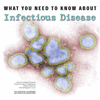The all-volunteer U. S. military has experienced multiple redeployments to Iraq and Afghanistan, increased use of the reserve components of the military and National Guard, increased numbers of deployed women and parents of young children, and an increase in the number of military personnel surviving severe injuries that in previous wars would have resulted in death. The National Research Council and the Institute of Medicine have produced a number of reports that discuss issues of importance to both active duty and retired military, and their families. All are free to download.
| Cognitive Rehabilitation Therapy for Traumatic Brain Injury: Evaluating the EvidenceTraumatic brain injury (TBI) may affect 10 million people worldwide. It is considered the “signature wound” of the conflicts in Iraq and Afghanistan. These injuries result from a bump or blow to the head, or from external forces that cause the brain to move… | |
| Long-Term Health Consequences of Exposure to Burn Pits in Iraq and AfghanistanMany veterans returning from the conflicts in Iraq and Afghanistan have health problems they believe are related to their exposure to the smoke from the burning of waste in open-air “burn pits” on military bases. Particular controversy surrounds the burn pit… | |
| Veterans and Agent Orange: Update 2010Because of continuing uncertainty about the long-term health effects of the sprayed herbicides on Vietnam veterans, Congress passed the Agent Orange Act of 1991. The legislation directed the Secretary of Veterans Affairs (VA) to request the IOM to perform a… | |
| Nutrition and Traumatic Brain Injury: Improving Acute and Subacute Health Outcomes in Military PersonnelTraumatic brain injury (TBI) accounts for up to one-third of combat-related injuries in Iraq and Afghanistan, according to some estimates. TBI is also a major problem among civilians, especially those who engage in certain sports. At the request of the… | |
| Blue Water Navy Vietnam Veterans and Agent Orange ExposureOver 3 million U.S. military personnel were sent to Southeast Asia to fight in the Vietnam War. Since the end of the Vietnam War, veterans have reported numerous health effects. Herbicides used in Vietnam, in particular Agent Orange have been associated with… | |
| Returning Home from Iraq and Afghanistan: Preliminary Assessment of Readjustment Needs of Veterans, Service Members, and Their FamiliesNearly 1.9 million U.S. troops have been deployed to Afghanistan and Iraq since October 2001. Many service members and veterans face serious challenges in readjusting to normal life after returning home. This initial book presents findings on the most… | |
| Provision of Mental Health Counseling Services Under TRICAREIn this book, the IOM makes recommendations for permitting independent practice for mental health counselors treating patients within TRICARE–the DOD’s health care benefits program. This would change current policy, which requires all counselors to practice… | |
| Contaminated Water Supplies at Camp Lejeune: Assessing Potential Health EffectsIn the early 1980s, two water-supply systems on the Marine Corps Base Camp Lejeune in North Carolina were found to be contaminated with the industrial solvents trichloroethylene (TCE) and perchloroethylene (PCE). The water systems were supplied by the Tarawa… | |
| Gulf War and Health: Volume 8: Update of Health Effects of Serving in the Gulf WarFor the United States, the 1991 Persian Gulf War was a brief and successful military operation with few injuries and deaths. However, soon after returning from duty, a large number of veterans began reporting health problems they believed were associated with… | |
| Student Mobility: Exploring the Impact of Frequent Moves on Achievement: Summary of a WorkshopMany low-income families struggle with stable housing and frequently have to move due to foreclosures, rent increases, or other financial setbacks. Children in these families can experience lasting negative effects, especially those who are young and still… | |
| Systems Engineering to Improve Traumatic Brain Injury Care in the Military Health System: Workshop SummaryThis book makes a strong case for taking advantage of the best of two disciplines–health care and operational systems engineering (a combination of science and mathematics to describe, analyze, plan, design, and integrate systems with complex interactions… | |
| Depression in Parents, Parenting, and Children: Opportunities to Improve Identification, Treatment, and PreventionDepression is a widespread condition affecting approximately 7.5 million parents in the U.S. each year and may be putting at least 15 million children at risk for adverse health outcomes. Based on evidentiary studies, major depression in either parent can… | |
| Gulf War and Health: Volume 7: Long-Term Consequences of Traumatic Brain InjuryThe seventh in a series of congressionally mandated reports on Gulf War veterans health, this volume evaluates traumatic brain injury (TBI) and its association with long-term health affects.
That many returning veterans have TBI will likely mean… |
|
| The Future of Disability in AmericaThe future of disability in America will depend on how well the U.S. prepares for and manages the demographic, fiscal, and technological developments that will unfold during the next two to three decades.
Building upon two prior studies from the Institute… |
|
| PTSD Compensation and Military ServiceThe scars of war take many forms: the limb lost, the illness brought on by a battlefield exposure, and, for some, the psychological toll of encountering an extremely traumatic event. PTSD Compensation and Military Service presents a thorough assessment of… | |
| Improving the Quality of Health Care for Mental and Substance-Use Conditions: Quality Chasm SeriesEach year, more than 33 million Americans receive health care for mental or substance-use conditions, or both. Together, mental and substance-use illnesses are the leading cause of death and disability for women, the highest for men ages 15-44, and the second… |











































